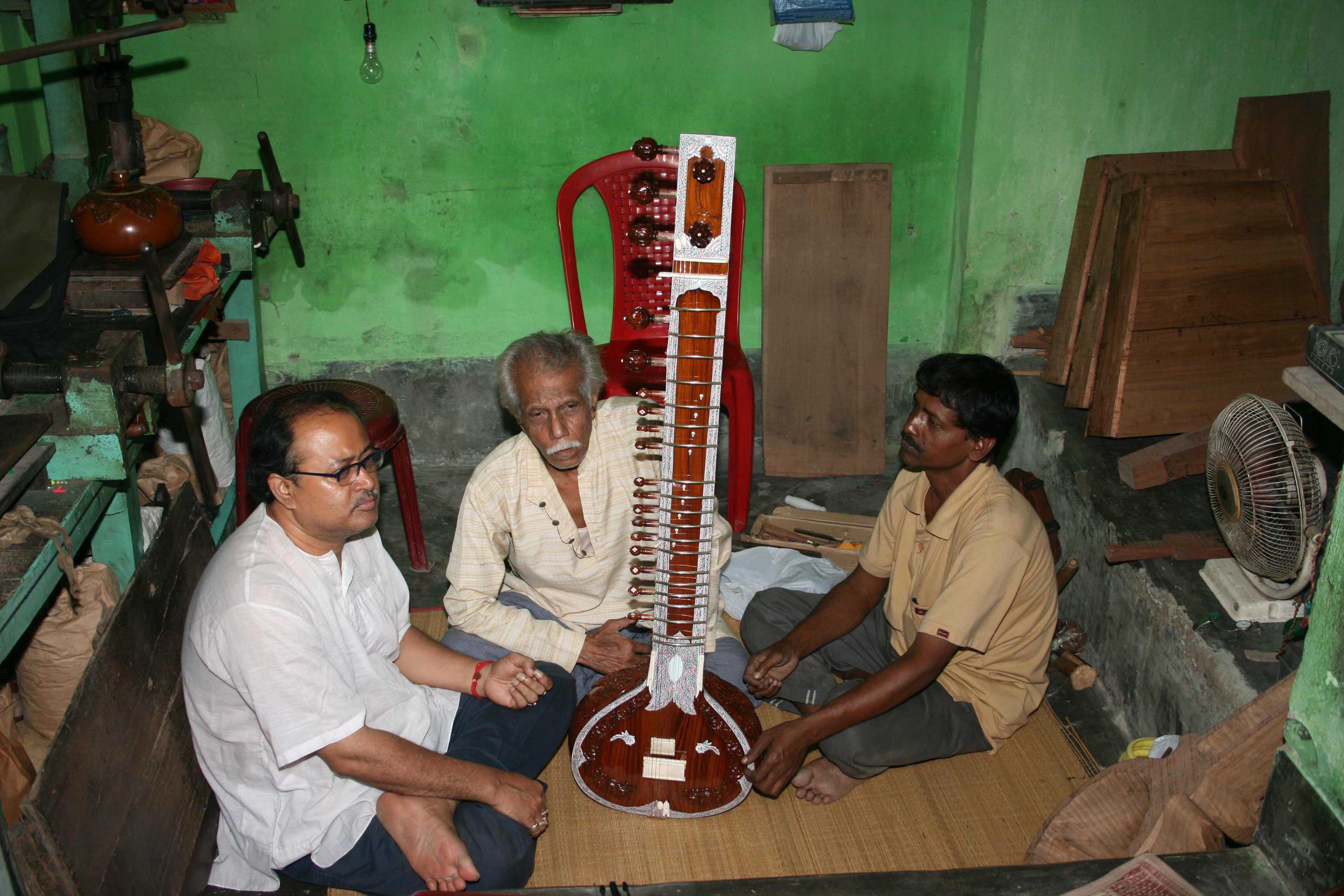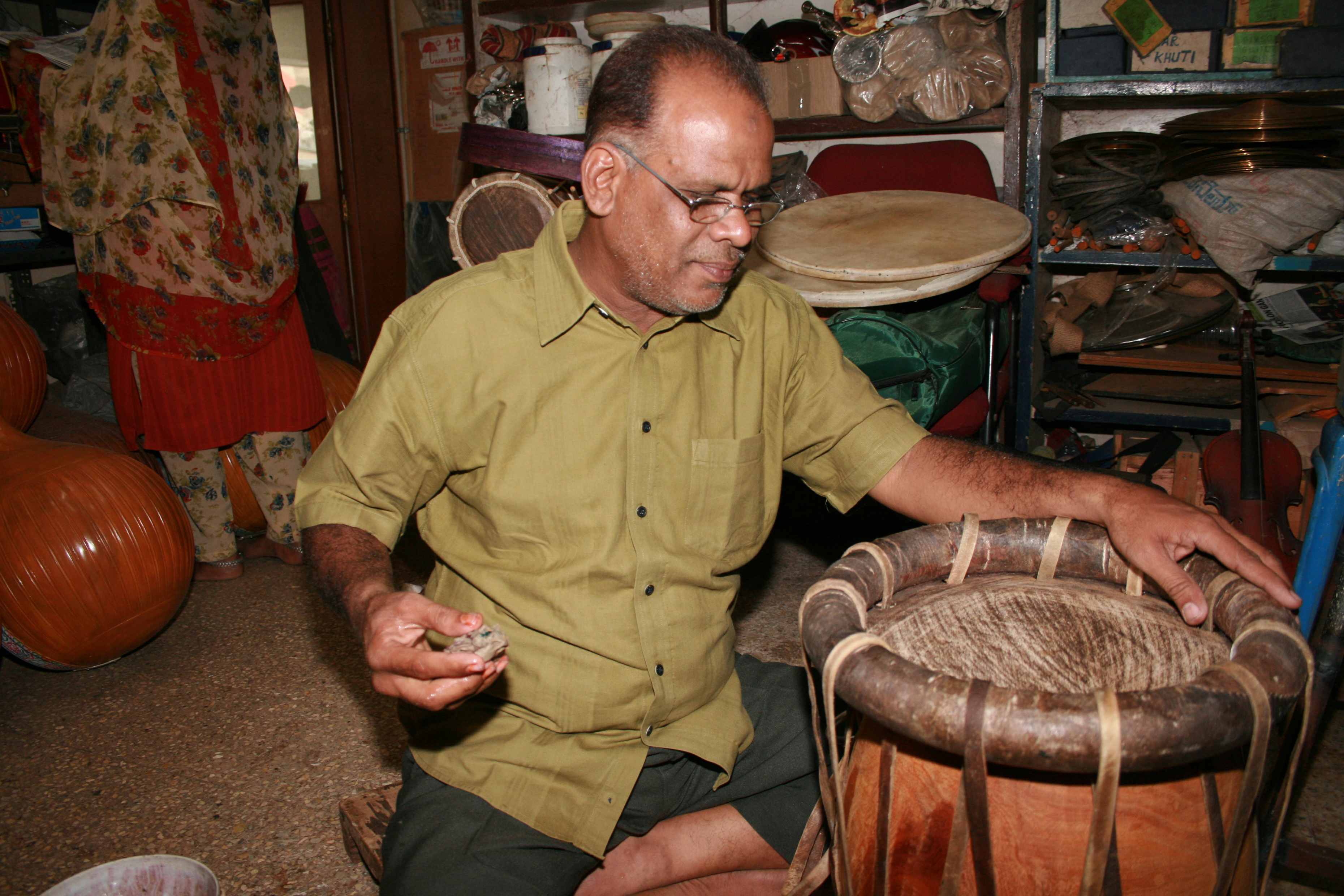
|
According to the collection interests of the Musical Instrument Museum in Phoenix, Arizona MIM in India Rolf has collected musical instruments belonging to the Hindustani (north Indian), Karnatic (south Indian) and devotional art music. Hindustani Music In West Bengal (eastern India) Rolf and his co-researcher, the Sarod player, Somjit Dasgupta have initiated what is probably the finest and most comprehensive manufacturing and collection project of Hindustani Musical Instruments ever conducted. Within this project it was also possible to film the making of such rare instruments as the dilrupa, sur-rabab and surshringar, or surbahar. Hindustani Music is the classical music prevalent in north India, Bangladesh and Pakistan. Somjit Dasgupta is a master musician specialising in the string instruments sarod and rabab, a disciple of the Hindustani music maestro, the late Radhika Mohan Moitra and also an instrument restorer. Rolf and Somjit commissioned the instrument making from a group of traditional instrument makers in West Bengal, led by the master craftsman Sanot Halder. The master instrument maker, Mohan Lal Sharma, whose family traditionally made instruments for the late Radhika Mohan Moitra and his gurus, guided these makers. As in the Karnatic Music collection project in West Bengal the researchers also collected instruments belonging to the devotional and folk music genres. This seems justified, as the strict division in ‘folk’, ‘devotional’, and ‘classical’ genres is originally a colonial concept, though still widely used, and does not show the interaction between these genres. Karnatic Music All the Karnatic and devotional musical instruments were collected in the south Indian state of Tamil Nadu, where the researchers worked with instrument makers of Tanjavur, Madurai and Chennai. Karnatic music (sometimes spelt karnatik, carnatic, or karnatak) is the traditional art music of South India and Sri Lanka. As in most other Indian musical genres the ensembles consist of four musical elements. The voice or a melody instrument express the melodic component, drums, claypot and jew’s harp (ie. kanjira, mrdangam, gadam, morsing) articulate the rhythmic structure, idiophones (thala) and/or handclapping punctuate the time cycles, and drone instruments provide the basic sounds (usually ‘sa’ or the higher ‘sa’ and ‘pa’). Drones are mainly the pneumatic or electric ruti-box and the open-stringed lute called a tambura. All music is voice-based: the voice is used as a solo ‘instrument’, where the melody instrument ‘follows’ the singer. Melodic instruments (such as the vina, violin, murali, and gottuvadyam) imitate the voice, but there is also a specific repertoire for each of these instruments. The term raga indicates a complicated melodic system based on tune and scale. A short unmetered introduction – the alapana – is normally sung to introduce a musical piece. Tala describes the rhythmic structure based on a fixed number of irregularly spaced beats to be played within a given tempo; the geometric multiplication or division is maintained throughout the piece. The main genres are kriti (song), varnam (longer study piece), ragam-tanam-pallavi (the elaborated main piece), padam and tillana (music accompanying dance). The periyaam is a temple instrument ensemble comprising drum, oboe and cymbals (ie tavil, nadasvaram and thala). Karnatic music has been mainly developed and shaped on the base of Hindu devotional music performed in the temples and private households and the Hindu courts of south India. |


